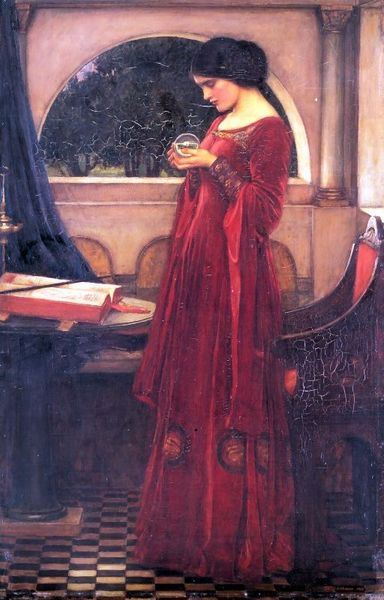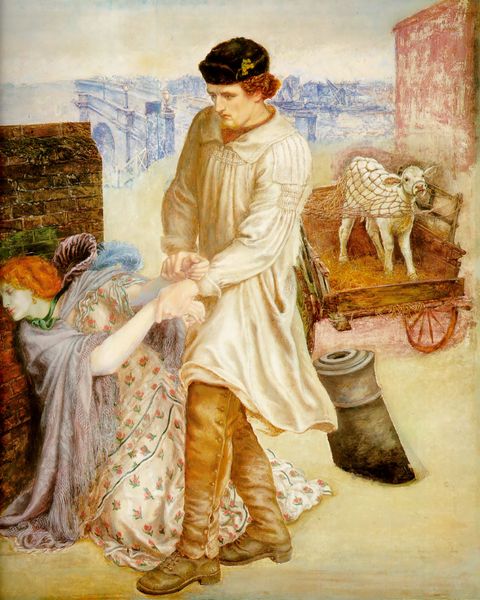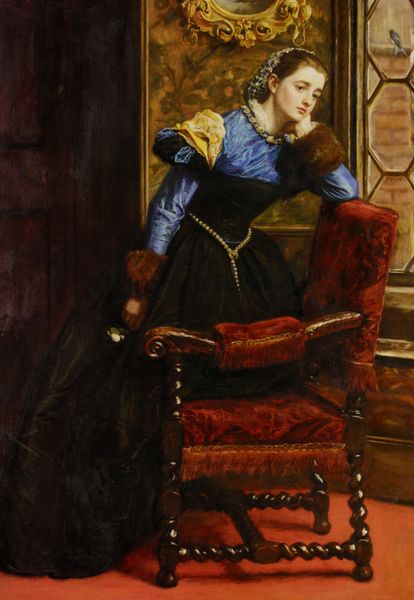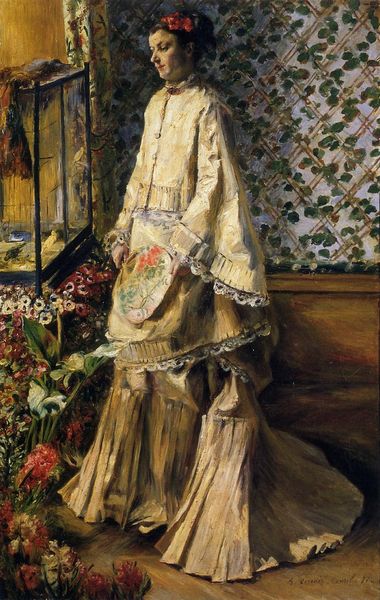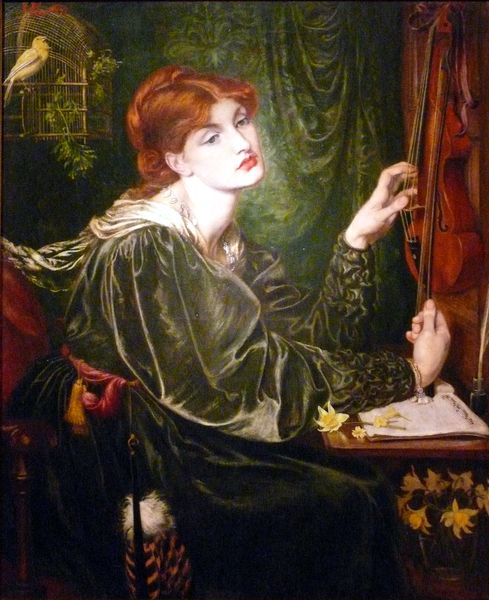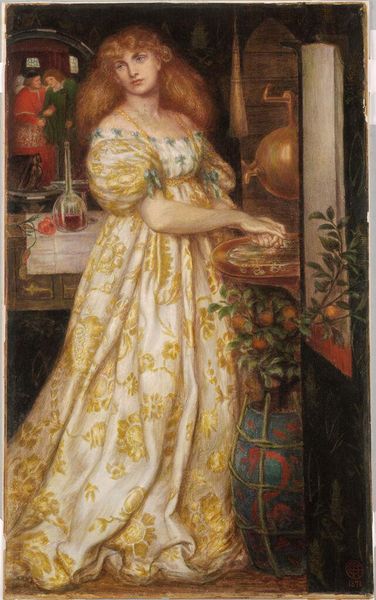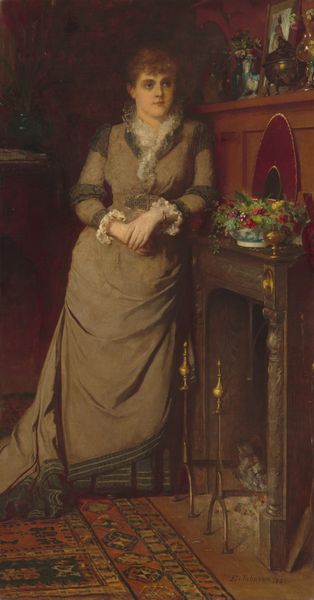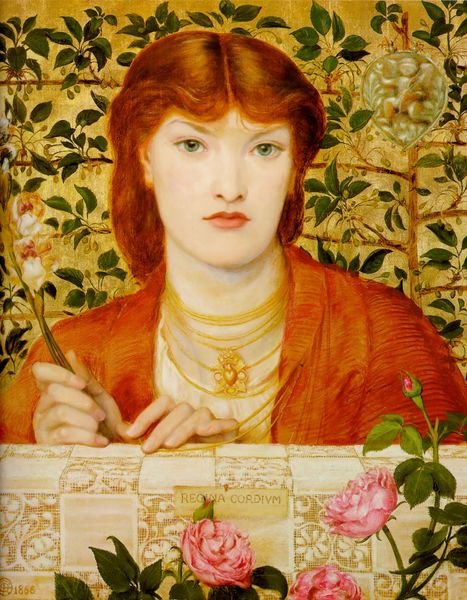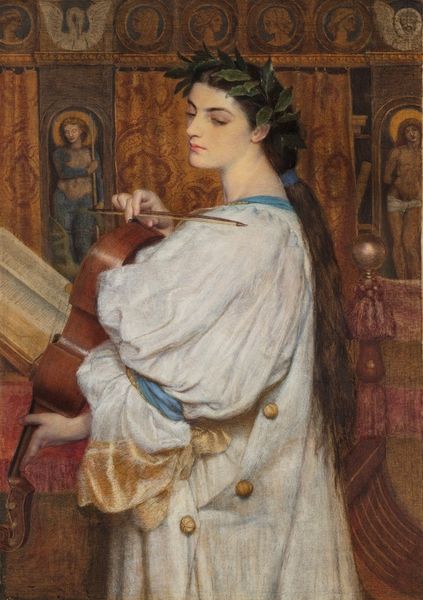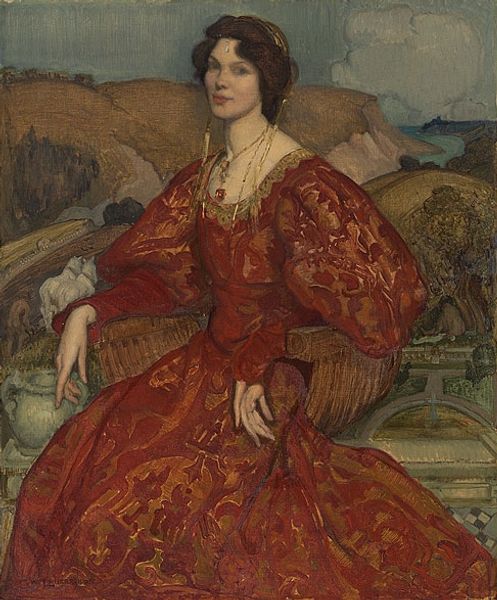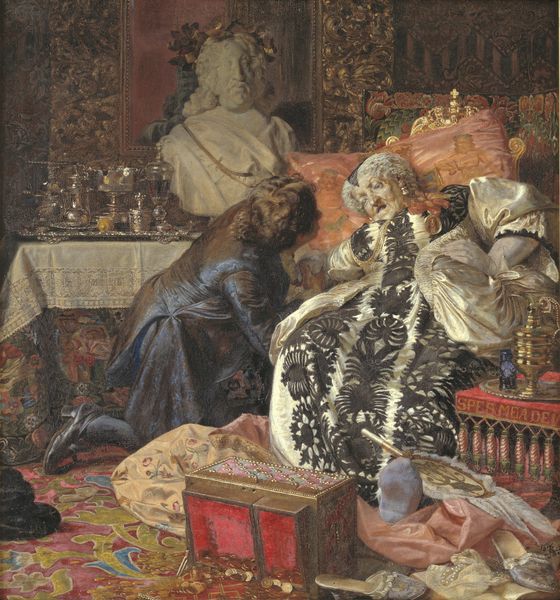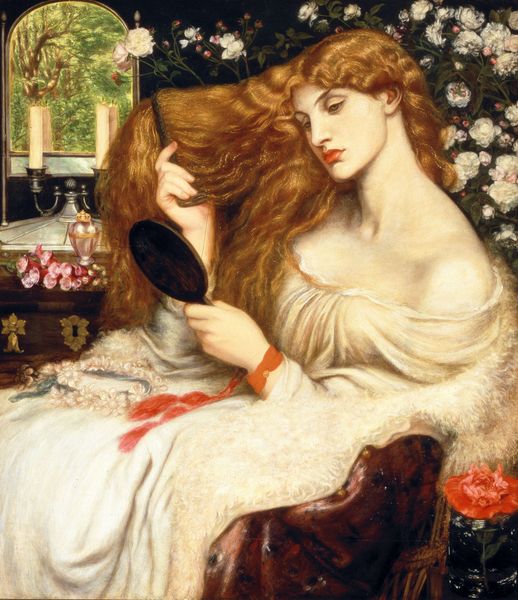
Copyright: Public domain
William Morris painted "La belle Iseult" during his early career, drawing inspiration from Arthurian legends and medieval aesthetics. His personal experiences and beliefs significantly influenced the painting's narrative. Iseult stands in her chamber, adorned with a floral crown, her gaze averted, perhaps lost in thought or longing. The artwork reflects the Pre-Raphaelite movement's interest in representing women and an idealized past. Morris's own marriage and complicated relationships may have subtly informed his portrayal of Iseult, who is caught in a love triangle between King Mark and Tristan. The painting evokes a sense of longing and introspection. It invites us to consider the emotional complexities of love, duty, and desire within the context of the romanticized medieval world. "La belle Iseult" reflects the Victorian era's fascination with romantic narratives and an idealized representation of women. The artwork also demonstrates the power of art to explore the complexities of human relationships, while referencing the emotional and personal dimensions of love and desire.
Comments
No comments
Be the first to comment and join the conversation on the ultimate creative platform.

